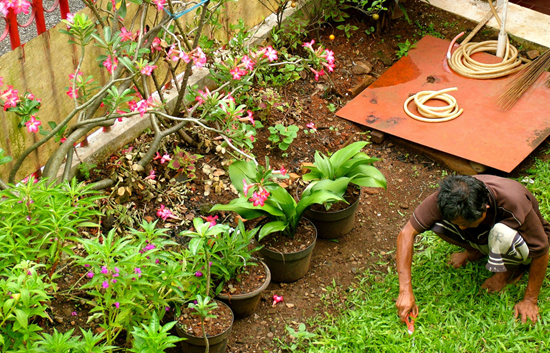
9 ways millennials are driving Southeast Asia’s tech boom
By Leighton Cosseboom, Tech In Asia, 18 November 2015.
By Leighton Cosseboom, Tech In Asia, 18 November 2015.
Millennials are a generation the entire world seems to be watching with interest, excitement, and sometimes anxiety. They’ve been criticized for being lazy and carrying around a sense of entitlement. Studies suggest, however, that claim couldn’t be further from the truth. The fact of the matter is that the future of international business and the global digital economy belongs to those who entered young adulthood at the turn of the century.
Data and speculation on American and European millennials can be found by the truckload. For Southeast Asia’s tech scene, the word millennial is important but less talked about. We’d like to paint a more accurate portrayal of the generation’s importance for the region’s nascent digital landscape. In no particular order, here are nine ways millennials are driving Southeast Asia’s tech boom.
1. The largest generation in history so far, and they love smartphones
1.8 billion out of 7 billion people worldwide can be called millennials. They are the largest generation to ever live. They are influential, impacting purchase decisions of peers and parents. In terms of earnings and spending power, millennials will make more money than the baby boomer generation (their parents) come 2018.
For tech in Southeast Asia, this is interesting because the region houses a large part of that 1.8 billion. Goldman Sachs says millennials have come of age during a time of technological change, globalization, and economic disruption. This gives them a different set of behaviours and experiences than their parents. Countries like Indonesia are currently seeing a new digital generation that doesn’t know a world without the internet or smartphones. 24 percent of millennials worldwide agree that tech is what sets them apart from other generations.
2. Social media savvy and talking about brands
It’s no secret that nearly everyone between the ages of 15 and 35 uses social media like Facebook, Twitter, and Instagram. Studies show that 41 percent of all millennials around the world have a social media account. They use these accounts to voice opinions about brands and companies. Wired says millennials often take to social media to complain about brands and tech that have let them down recently. This means they will be a company’s greatest advocates or worst critics in real-time. Most of what causes millennials to refer to brands positively or negatively on social media has to do with the online experience they’ve had with the brand.
So what does this mean for Southeast Asian tech people? Start-ups will need to take social media deadly serious, especially in places like Jakarta, which is now hailed as the Twitter capital of the world. Start-ups will need to create multiple social media presences to engage with customers who have things to say about their brands - in many regional languages too.
3. Desire for flexible schedules leads to more telecommuting
This is the case with millennials the world over, but particularly so in Southeast Asia. The Philippines has seen a dramatic uptick in its number of stay-at-home workers, with Upwork (formerly Elance-oDesk) acting as the main vehicle for the nation’s million-plus online freelancers. From January 2010 to April 2014, the country’s freelancers earned more than US$207 million in total, which is large when taking into account the Philippines’ still budding web connectivity. In recent years, Upwork said Indonesian workers earned a feedback rating average of 4.5 out of 5, topping the list of countries with more than 100 assignments completed.
Locals are also starting to see that freelancing from home can actually earn more than holding down a day job. According to Indonesian company comparison portal Qerja (a local version of Glassdoor), talented Indonesian graphic designers for companies like Ciputra Group and news portal Detik earn a median of US$400 per month, which is much less than one could make doing freelance graphic design online full-time for international clients.
See: More Indonesians will soon collect paychecks in pajamas. Tapping the nation’s stay-at-home workforce
4. Mobile is paramount
Image: Tamara Sanderson
Entrepreneur goes so far as to say start-ups should forget about building websites. If you are targeting millennials as a major audience, you should put a larger share of your marketing dollars toward mobile. A recent study from comScore found that 18 percent of millennials, those aged 18 to 34, are mobile-only web users, compared to only 5 percent of people aged 35 to 54.
In Southeast Asia, this phenomenon is compounded. Tech start-ups are bypassing websites all together, going straight to mobile. Some call it “leapfrogging.” Smartphone adoption has overtaken computer adoption for the first time in the past two years. The trend holds true in countries like Singapore, Malaysia, Indonesia, and even Hong Kong.
5. Millennials will make or break your ecommerce firm
Ecommerce is getting a lot of attention in markets like Malaysia, Singapore, and Indonesia, with the majority of shoppers naturally being millennials. But it’s also important to keep in mind that countries like Indonesia haven’t yet hit their demographic dividend. Because more than 50 percent of the population is still under the age of 30, most have not yet reached their prime in terms of spending power.
For this reason, ecommerce firms are racing to get a foothold in the market before it reaches an anticipated inflection point - or the point where a majority of the nation’s middle class can start consuming more. A stat that often gets thrown around is the fact that ecommerce is still around one percent of all retail in Indonesia. Countries like the Philippines are similar. While the past four years have certainly been an interesting ride for Southeast Asian ecommerce, experts say the next three to four years are the ones that will really count.
6. An affinity for entrepreneurship
A recent survey of 5,500 international millennials by Visa and Millward Brown reveals 83 percent of Indonesian millennial respondents are looking to one day start their own businesses. 79 percent of Filipinos gave them same response. 8 percent claimed to already be entrepreneurs.
While it’s never been easier to start one’s own business than it is today, Southeast Asia’s millennials, unlike most of their parents, know that they must think regionally or even globally from day one. Using the web to cultivate new sales and marketing channels is one thing millennials recognize as essential to growing a business. This is a radical departure from legacy businesses of the past. For example, if a millennial son takes over his baby boomer father’s plastic factory in Ho Chi Minh City, he’ll likely be looking to take the otherwise traditional business online.
7. An insatiable appetite for on-demand services
Growing up with access to information at their fingertips, millennials have become accustomed to an on-demand lifestyle, expect a seamless shopping experience, and won’t hang around for long if they don’t find what they need, says Accenture.
Because millennials are by and large sophisticated tech users, studies show an increased affinity and appetite for on-demand services. Southeast Asia is no different from the rest of the world in that respect, although just a little late. Regardless, we’ve witnessed a slew of on-demand start-ups cropping up with wild popularity. Malaysia’s ServisHero has gained traction, Indonesia’s Seekmi and Go-Jek are concepts that are definitely taking hold, and in Vietnam, the most successful player in the on-demand space is Việc Nhà, an Uber-style mobile app that sends workers like maids and plumbers to your house.
8. Southeast Asia’s millennials are full of ambition
Closely related to point six, Visa and Millward Brown say 72 percent of millennials in Asia claim they are ambitious with big dreams. Millennial Week adds that 48 percent of millennials say owning their own business is a top life goal.
Millennials in emerging markets such as the Philippines are more ambitious in attaining leadership positions than their counterparts in developed markets, according to the results of Deloitte’s 2015 Millennial Survey. More than 65 percent of millennials in emerging markets aspire to become the “leader or most senior executive within their current organization,” compared to fewer than 38 percent in markets like France and Germany.
9. A preference for automated solutions over human assistance
Research shows that if a millennial consumer has a question that can’t be answered immediately, more than 50 percent will abandon the online transaction on the spot.
The future of engaging these people hinges on the user experience itself. Tech companies need to provide options that give millennials answers at their fingertips. They will generally not seek assistance over live chat, phone, or email. They need self-service solutions; if they can’t quickly fix their own dilemmas, they’ll likely go elsewhere, knowing endless alternatives are just a Google search away.









jasa cuci karpet
ReplyDeletecuci karpet
jasa cuci sofa
cuci sofa bed
cuci springbed
jasa poles marmer
cuci gorden
kantor konsultan
konsultan hki
pendaftaran merek
pendaftaran paten
rolling door
toko rolling door
folding gate
kusen allumunium
harga rolling door
pagar stainless steel
bisnis online
sewa mobil yogya
sewa mobil jogja
rent car jogja
rental mobil yogyakarta
sewa bus jogja
sewa mobil jakarta
rental mobil jakarta
rental innova reborn
rental mobil fortuner
rental jakarta
rolling door
harga rolling door
toko rolling door
rolling door industri
jual rolling door
jasa pindahan
jasa pindahan rumah
jasa pindahan kantor
jasa pindahan apartemen
jasa pindahan jakarta
service ac
service kulkas
service freezer
service mesin cuci
service elektronik
sterno
sterno medan
sterno makasar
sterno jogja
ReplyDeletetravel jakarta semarang
travel semarang jakarta
travel jakarta brebes semarang
travel jakarta rute semarang
rolling door
pasang rolling door
harga rolling door
rolling door otomatis
rolling door industri
kursus autocad
kursus vray
kursus lumion
kursus sketchup
kursus revit
supplier cincau hitam
cincau hitam
bahan baku cincau hitam
jual bahan baku cincau
dried mesona chinensis grass jelly
kanopi baja ringan
atap galvalum
atap baja ringan
baja ringan
rangka baja ringan
tukang taman sidoarjo
tukang taman
tukang taman minimalis
tukang kolam minimalis
jual rumput gajah mini
tukang taman kering
kingshock
jeep
offroad
lift kit
performance part
guru les privat
ReplyDeleteles privat
guru privat
les privat sd
les privat smp
les privat sma
les privat umum
tukang kolam koi surabaya
ReplyDeletetukang taman sidoarjo
tukang taman gresik
thanks service elektronik jogja
ReplyDelete